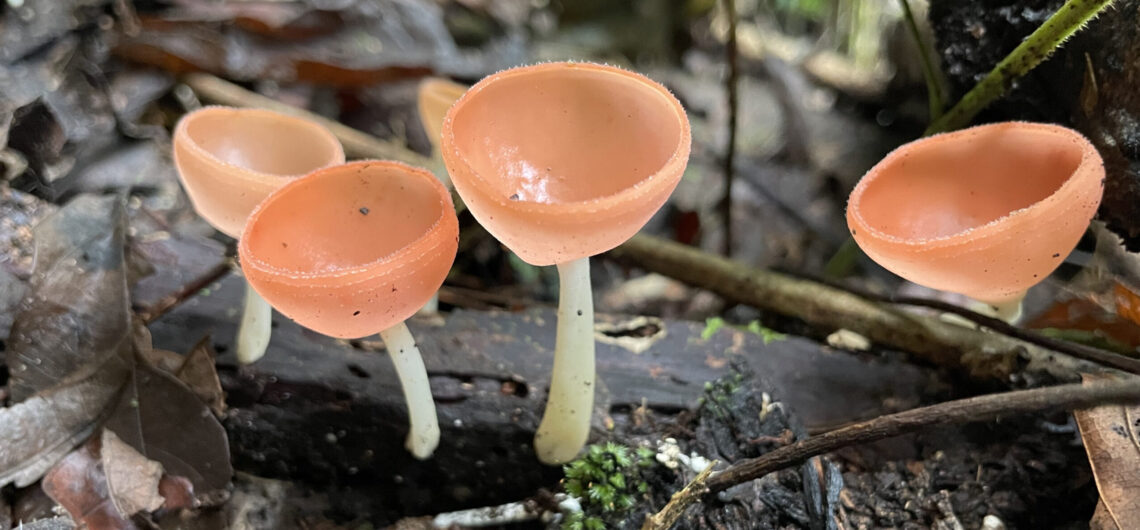Cookeina speciosa
Photo: Rosannette Quesada-Hidalgo
Cookeina speciosa is a cup-type fungus that grows throughout the tropics in both the new and the old world. In Panama, it is common in lowland rainforests. It belongs to the family Sarcoscyphaceae, and grows on fallen tree trunks, branches, or logs in decomposition found on the forest floor.
It has reddish-salmon, light-coral cups with at least three rows of short, fine white hairs on the margin of the crown in mature specimens; in young specimens the hairs are arranged in a single row. The cup is held on a whitish pedicel. It can grow solitary or in groups of two to five individuals of different sizes. Cookeina speciosa is very resistant, and usually does not lose its shape after heavy tropical rains, but it does wrinkle with age. It is edible and is used in meals in the Comarca Ngöbe Buglé in western Panama and parts of México, and is used as medicine in Cameroon.
A similar species, C. tricholoma, can sometimes be mistaken for C. speciosa. However, C. tricholoma usually has smaller cups and is covered with long, conspicuous whitish hairs.
Reference:
Iturriaga, T., & Pfister, D. H. 2006. A monograph of the genus Cookeina (Ascomycota, Pezizales, Sarcoscyphaceae). Mycotaxon, 95 (137), e180.

